Epilogue
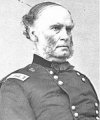
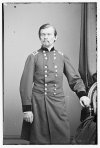 As the Federals pursued the Confederates and reached Elkhorn Tavern, they realized that they had won the day. Union Generals Samuel Curtis and Franz Sigel moved north up the Wire Road and caught glimpses of some of the Confederates retreating to the north. Curtis mistakenly believed the entire Confederate army was retreating along this route and sent the 1st Missouri Flying Battery to attack the retreating Southerners. These southerners were Brigadier General Pike's men. Pike attempted to set up a line of defense, but his men fled once the Federal battery opened fire. Pike and hundreds of men fled west along the Bentonville Detour. Others went north towards Keetsville and still other headed east trying to link up with the Confederates retreating down the Huntsville Road.
As the Federals pursued the Confederates and reached Elkhorn Tavern, they realized that they had won the day. Union Generals Samuel Curtis and Franz Sigel moved north up the Wire Road and caught glimpses of some of the Confederates retreating to the north. Curtis mistakenly believed the entire Confederate army was retreating along this route and sent the 1st Missouri Flying Battery to attack the retreating Southerners. These southerners were Brigadier General Pike's men. Pike attempted to set up a line of defense, but his men fled once the Federal battery opened fire. Pike and hundreds of men fled west along the Bentonville Detour. Others went north towards Keetsville and still other headed east trying to link up with the Confederates retreating down the Huntsville Road.
Curtis sent Sigel north through Cross Timer Hollow to capture the retreating Confederates. Sigel ordered his 1st and 2nd Divisions north in pursuit. Shortly after 1:00 P.M. Curtis began to discover that the main route of the Confederate retreat was east and not north. He was furthered angered by Sigel having removed have of his army to the north. Before Curtis knew what was happening, Sigel had his infantry all the way to Keetsville, Missouri.
The retreating Confederates spent the night across the White River in Van Winkle's Mill, Arkansas. It took over a week for the Confederate army to reach Van Buren, Arkansas in which Van Dorn had decided to make his new base of operation.
On March 9th, Curtis sent some cavalry units southwest along the Bentonville Detour after what he thought was the retreating Confederate army. To the north, Sigel continued to disregard orders from Curtis and moved his forces further north along the Wire Road towards Springfield, Missouri. Eventually, Sigel realized that he was not pursuing the retreating Confederate army and turned around an headed back to Elkhorn Tavern. By the close of March 9th, Curtis knew that the Confederate army had escaped his grasp.
The Federal casualties suffered at Pea Ridge were:
Union-10,250 engaged: 203 killed (2 percent), 980 wounded (9.6 percent), and 201 missing (2 percent). Total casualties were 1,384 (13.5 percent).
Almost half of the Federal casualties came from Carr's 4th Division, a result of their desperate fighting around Elkhorn Tavern on March 7th.
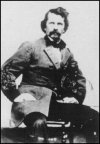 The Confederate casualties suffered at Pea Ridge have been difficult to estimate:
The Confederate casualties suffered at Pea Ridge have been difficult to estimate:
Confederate Major General Earl Van Dorn reported that the Confederate casualties were “not more than 800 or 1,000 killed and wounded and between 200 and 800 prisoners.” In a later report, Van Dorn would lower these estimates.
Shea and Hess believe the Confederate losses were much higher. Van Dorn started with 16,500 men and through attrition had only 13,000 when the battle began. Of the 13,000 Southerners engaged, Shea and Hess estimate that Van Dorn suffered about 2,000 casualties, more than 15% of the men he had engaged.
In his official report to C.S.A. Secretary of War, J P. Benjamin, Van Dorn downplayed the magnitude of his strategic defeat:
“I attempted first to beat the enemy at Elkhorn, but a series of accidents entirely unforeseen and not under my control and a badly-disciplined army defeated my intentions. The death of McCulloch and McIntosh and the capture of Hebert left me without an officer to command the right wing, which was thrown into utter confusion, and the strong position of the enemy the second day left me no alternative but to retire from the contest. A heavy blow was struck them, how ever, and they are somewhat paralyzed. I shall march to another field before they recover, and before their re-enforcements arrive, which they are daily expecting.
“If I give battle to the troops near New Madrid I relieve Beauregard. If I find this not advisable or practicable, I shall march boldly and rapidly towards Saint Louis between Ironton and the enemy's grand depot at Rolla. I think I shall accomplish something in that direction. I shall at all events task my humble abilities to their utmost to achieve some success for our cause, and I earnestly hope that I may be successful.”
“I was not defeated, but only foiled in my intentions.”
Van Dorn lost touch with his army during the battle and focused on what was occurring at his immediate physical location.
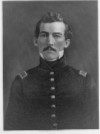 Union Brigadier General Samuel R. Curtis soon received reinforcements that brought his strength back above 10,000 effectives. But supplies were hard to come by. Curtis held his quartermaster, Captain Phil Sheridan, responsible for his lack of horses, supplies, and ammunition. Curtis and Sheridan clashed and Curtis even went so far as to have Sheridan arrested for insubordination. Before there was a court-martial, Major General Halleck had Sheridan transferred to the Eastern Theater. By March 18th, Curtis had withdrawn most of the Union Army of the Southwest to Keetsville, Missouri.
Union Brigadier General Samuel R. Curtis soon received reinforcements that brought his strength back above 10,000 effectives. But supplies were hard to come by. Curtis held his quartermaster, Captain Phil Sheridan, responsible for his lack of horses, supplies, and ammunition. Curtis and Sheridan clashed and Curtis even went so far as to have Sheridan arrested for insubordination. Before there was a court-martial, Major General Halleck had Sheridan transferred to the Eastern Theater. By March 18th, Curtis had withdrawn most of the Union Army of the Southwest to Keetsville, Missouri.
Based on Sigel's performance at Pea Ridge, both Curtis and Halleck lost all confidence in Union Brigadier General Franz Sigel. On March 19th, Halleck sent Curtis the following message:
 “I was by no means surprised at General Sigel's conduct before the battle of Pea Ridge. It was precisely in keeping with what he did at Carthage and Wilson's Creek. After your expedition started I received documentary proofs from Generals Sturgis, Schofield, and Totten, and a number of other officers, in regard to his conduct on those occasions, which destroyed all my confidence in him. It was for that reason that I telegraphed you so often not to let Sigel separate from you. I anticipated that he would try to play you a trick by being absent at the critical moment. I wished to forewarn you of the snare, but I could not then give you my reasons. I am glad that you prevented his projects and saved your army. I cannot describe to you bow much uneasiness I felt for you. You saved your army and won a glorious victory by refusing to take his advice. I do not believe he has been made a major-general. If so, I shall ask to have him sent to some other Department. ”
“I was by no means surprised at General Sigel's conduct before the battle of Pea Ridge. It was precisely in keeping with what he did at Carthage and Wilson's Creek. After your expedition started I received documentary proofs from Generals Sturgis, Schofield, and Totten, and a number of other officers, in regard to his conduct on those occasions, which destroyed all my confidence in him. It was for that reason that I telegraphed you so often not to let Sigel separate from you. I anticipated that he would try to play you a trick by being absent at the critical moment. I wished to forewarn you of the snare, but I could not then give you my reasons. I am glad that you prevented his projects and saved your army. I cannot describe to you bow much uneasiness I felt for you. You saved your army and won a glorious victory by refusing to take his advice. I do not believe he has been made a major-general. If so, I shall ask to have him sent to some other Department. ”
However, Sigel had powerful political connections and the loyalty of his German-American troops. On March 25th, Sigel requested and was granted a medical leave. He was later promoted to Major General and transferred to the east.
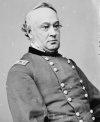 Halleck was thrilled that his plans to push the Confederates out of Missouri had succeeded. He was one step closer to fulfilling his strategy for the war in the west. He was now able to divert men and supplies to Tennessee as he reported in a message to General McClellan on March 10th:
Halleck was thrilled that his plans to push the Confederates out of Missouri had succeeded. He was one step closer to fulfilling his strategy for the war in the west. He was now able to divert men and supplies to Tennessee as he reported in a message to General McClellan on March 10th:
“Reserves intended to support General Curtis will now be drawn in as rapidly as possible and sent to the Tennessee. I propose going there in a few days. That is now the great strategic line of the Western campaign ... I shall soon fight a great battle on the Tennessee, unsupported, as it seems, but if successful, it will settle the campaign in the West.”
Halleck continued to be wary of Van Dorn while he remained in Arkansas. He ordered Curtis to stay near the Missouri border and pay attention to Van Dorn's movements.
“Be careful to keep your main force together and well in hand. Ascertain the enemy's movements by throwing out cavalry. Be careful of Van Dorn. He is a vigilant and energetic officer, and will be certain to strike any exposed point. Keep me well advised of the enemy's movements, as I must be prepared for him on other points. This is important.”
“It is not intended to advance across Boston Mountains on any consideration. My instructions are not to advance to Fort Smith, but to keep the enemy south of Boston Mountains till he can be turned and cut off from his main source of supplies.”
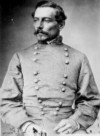 After his defeat at Pea Ridge, Van Dorn had decided to move his Army of the West across the Mississippi River and support General P. T. G. Beauregard. He sent a message to Beauregard saying that his troops would be at Pocahontas in northeastern Arkansas by April 7th.
After his defeat at Pea Ridge, Van Dorn had decided to move his Army of the West across the Mississippi River and support General P. T. G. Beauregard. He sent a message to Beauregard saying that his troops would be at Pocahontas in northeastern Arkansas by April 7th.
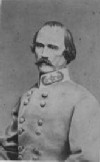 By this time, Confederate General Albert Sydney Johnston was preparing to take on Union forces stationed at Pittsburg Landing, Tennessee under the command of Union General Ulysses S. Grant. Johnston sent a message to Van Dorn ordering him to move his troops to Memphis, Tennessee. Van Dorn's Army of the West would not arrive in time to participate in the Battle of Shiloh.
By this time, Confederate General Albert Sydney Johnston was preparing to take on Union forces stationed at Pittsburg Landing, Tennessee under the command of Union General Ulysses S. Grant. Johnston sent a message to Van Dorn ordering him to move his troops to Memphis, Tennessee. Van Dorn's Army of the West would not arrive in time to participate in the Battle of Shiloh.
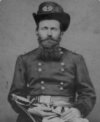 On March 27, 1862, Curtis received word that he had been promoted to Major General. When the news that Van Dorn's Confederate Army of the West was moving east, Curtis felt he had to protect Missouri and cover that movement with the Union Army of the Southwest. By May, Curtis would have his Army of the Southwest halved by detachments sent across the Mississippi River by order of Major General Halleck. Curtis would take his army into northeastern and north central Arkansas. Although failing in his bid to capture Little Rock, the Arkansas capital, he would eventually occupy Helena, Arkansas in July, 1862.
On March 27, 1862, Curtis received word that he had been promoted to Major General. When the news that Van Dorn's Confederate Army of the West was moving east, Curtis felt he had to protect Missouri and cover that movement with the Union Army of the Southwest. By May, Curtis would have his Army of the Southwest halved by detachments sent across the Mississippi River by order of Major General Halleck. Curtis would take his army into northeastern and north central Arkansas. Although failing in his bid to capture Little Rock, the Arkansas capital, he would eventually occupy Helena, Arkansas in July, 1862.
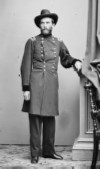 Union Colonel Grenville Dodge later summed up what Curtis had accomplished with the Army of the Southwest:
Union Colonel Grenville Dodge later summed up what Curtis had accomplished with the Army of the Southwest:
“The campaign demonstrated early in the war what could be accomplished by a small Army 300 miles away from any rail or water communication, in rugged, mountainous, sparsely settled country, marching in winter, and virtually subsisting upon the country.”
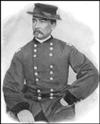 Captain Phil Sheridan, in his memoirs, also had high praise for what Curtis had accomplished in the winter of 1861/62:
Captain Phil Sheridan, in his memoirs, also had high praise for what Curtis had accomplished in the winter of 1861/62:
“After Pea Ridge was won, certain efforts were made to deprive Curtis of the credit due him for the victory; but, no matter what merit belonged to individual commanders, I was always convinced that Curtis was deserving of the highest commendation, not only for the skill displayed on the field, but for a zeal and daring in campaign which was not often exhibited at that early period of the war. Especially should this credit be awarded him, when we consider the difficulties under which he labored, how he was hampered in having to depend on a sparsely settled country for the subsistence of his troops”
Driving Southern forces out of Missouri was a key component in Union Major General Henry Halleck's strategy for winning the battle for the Mississippi River Valley. It turned out that Halleck picked the right man for the job in Brigadier General Samuel R. Curtis. In defeating Confederate Major General Earl Van Dorn's Army of the West at the Battle of Pea Ridge, Curtis had won the struggle for Missouri. Halleck would be able to divert troops and resources to the major battles that would be fought east of the Mississippi River in Tennessee and Mississippi.
Over the next two years, Missouri would be the setting for guerrilla warfare, but no major battles would be fought until the fall of 1864 when Confederate Major General Sterling Price would once again invade his home state of Missouri.
Back: Welfley's Knoll
Next: Sites of Interest
